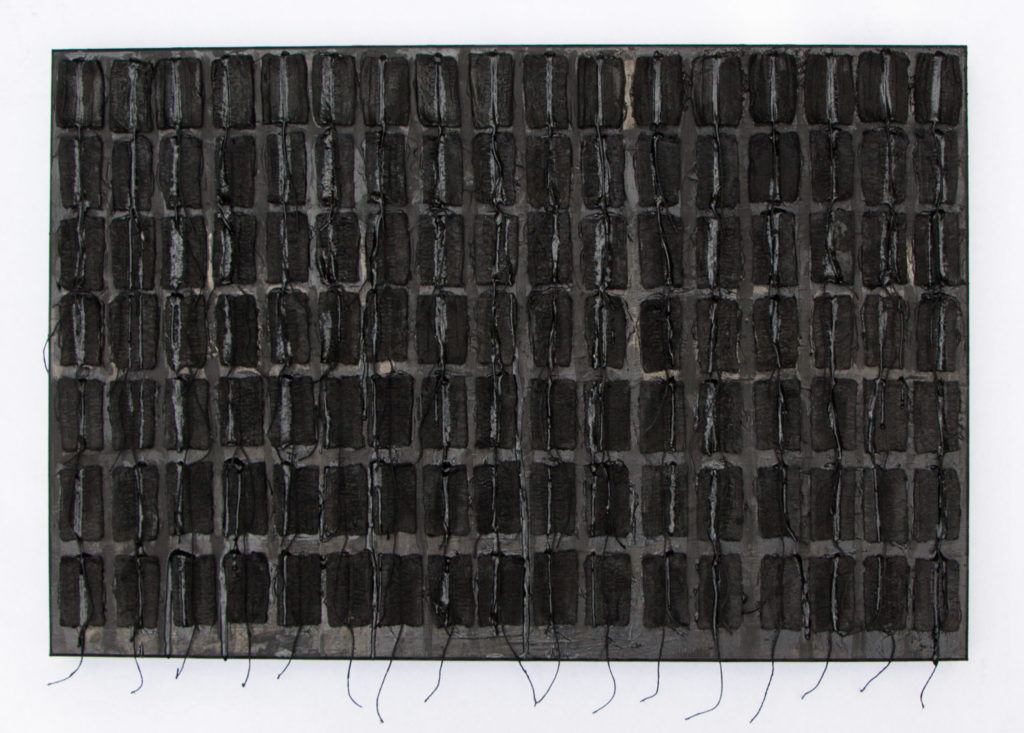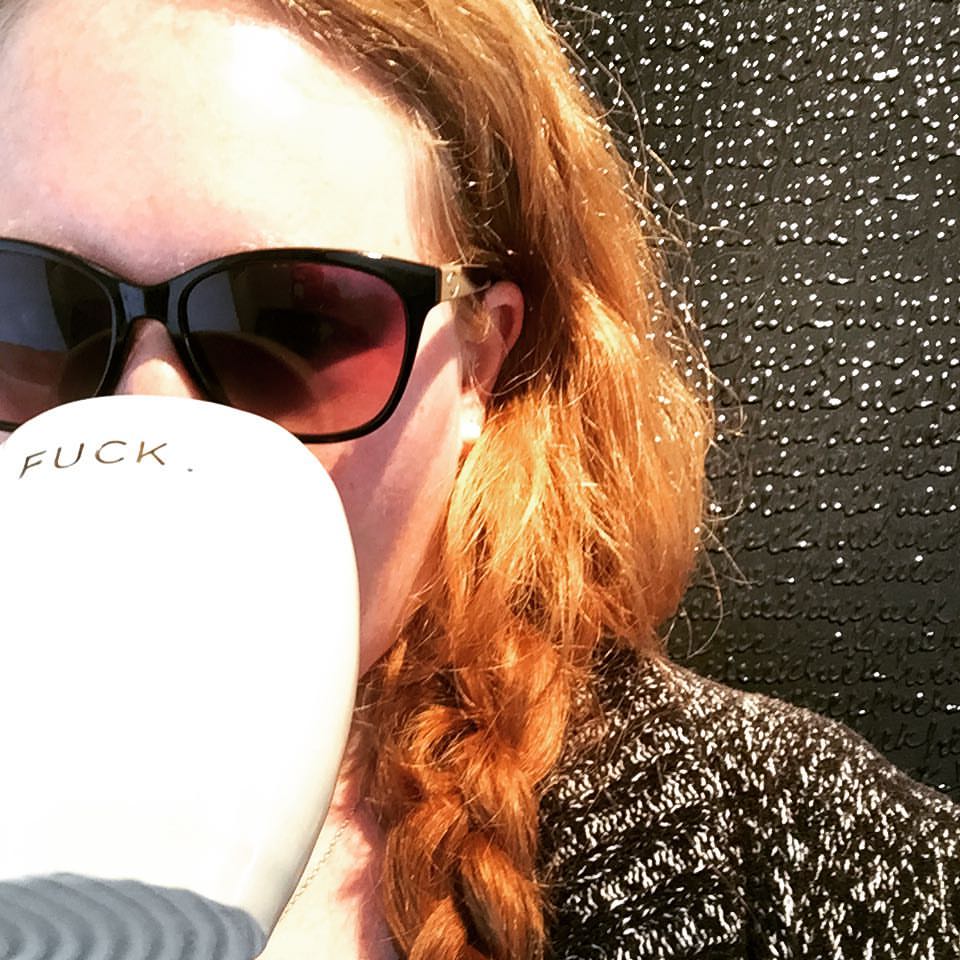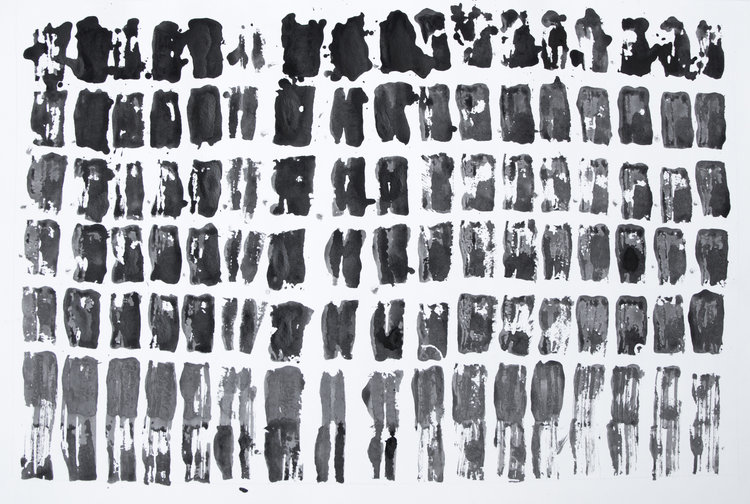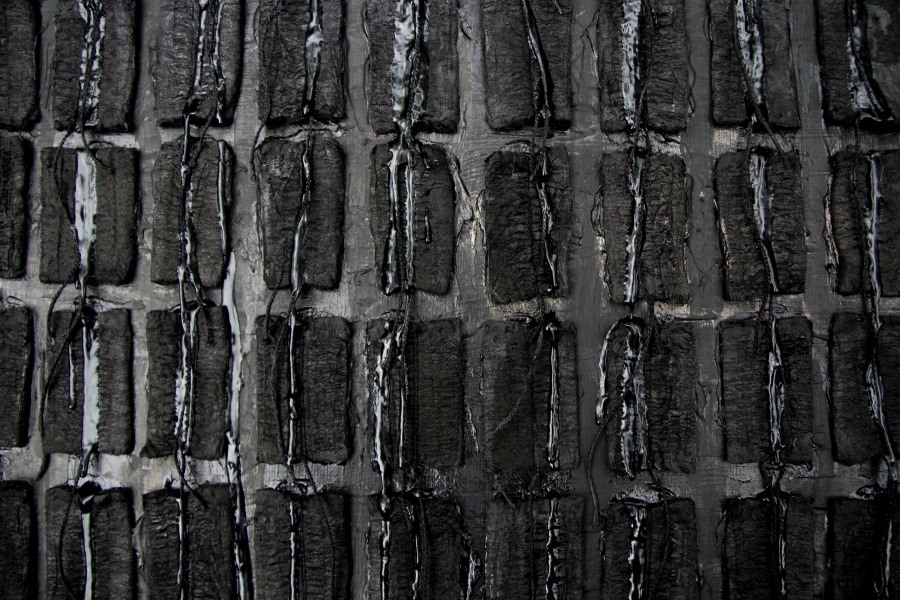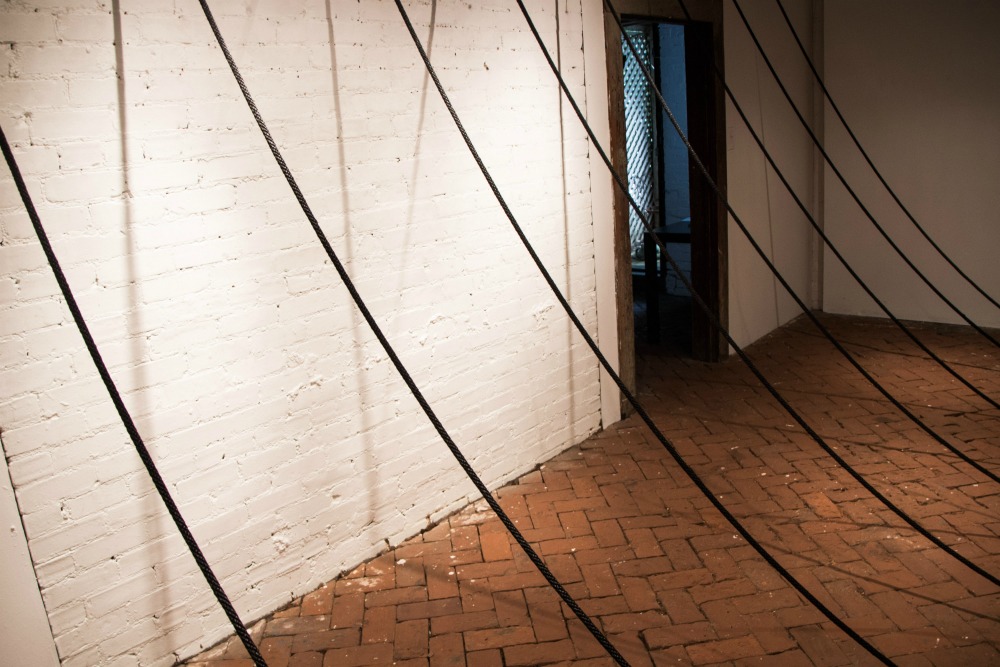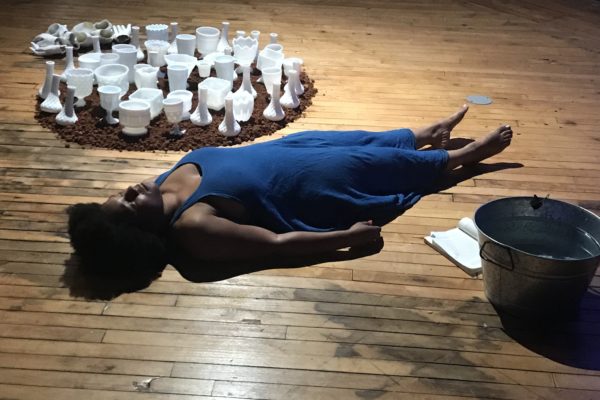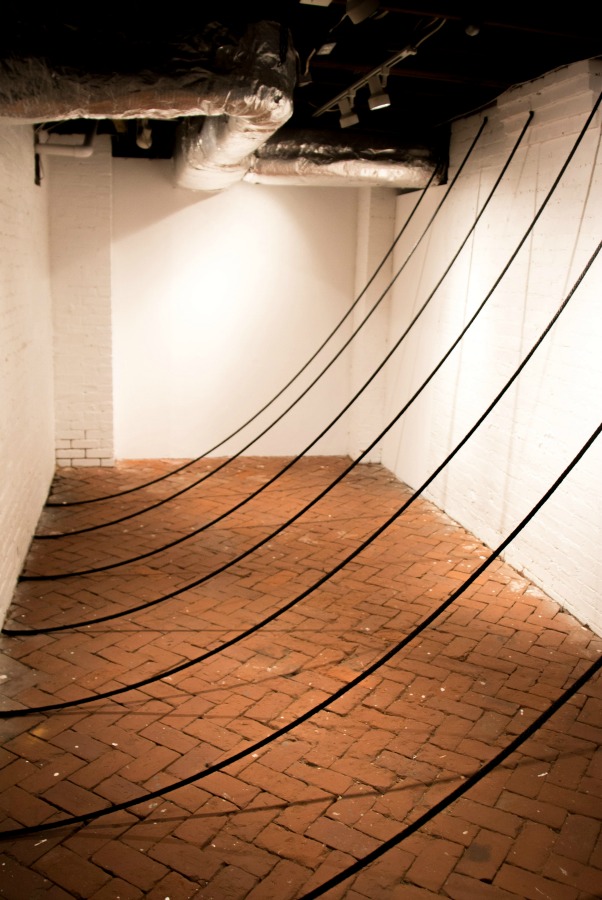 Sarah Nathaniel is a rebel, an activist, an award winner, and a curator — but first and foremost, she is an artist. The Decatur native (and current dweller) got her undergraduate degree in painting from Guilford College in Greensboro, North Carolina, and her MFA in painting from SCAD. Along with her gigs as an artist as well as an art teacher at various spots around the city, she’s the coordinator of operations and programming at MINT gallery, in charge of day-to-day needs, fundraising, interns and curating.
Sarah Nathaniel is a rebel, an activist, an award winner, and a curator — but first and foremost, she is an artist. The Decatur native (and current dweller) got her undergraduate degree in painting from Guilford College in Greensboro, North Carolina, and her MFA in painting from SCAD. Along with her gigs as an artist as well as an art teacher at various spots around the city, she’s the coordinator of operations and programming at MINT gallery, in charge of day-to-day needs, fundraising, interns and curating.
Sarah’s art is bold, thought-provoking and leaves a lasting impression — she’s implemented materials like Barbie legs and tampons into her work in a way that’s disarming without being shock for shock’s sake.
Here, CommonCreativ chatted with the artist about the inspiration for her aesthetic, her meditative approach to art, and the experimental project she’s working on next.
CommonCreativ: How long have you lived in Atlanta, and what brought you here?
Sarah Nathaniel: I grew up in Atlanta, moved to Fort Lauderdale, Florida, after college because, hey, why not move to the beach? I lived there for 10 years (my husband’s hometown) and then moved back to Atlanta in 2012 to pursue my MFA at SCAD.
CC: What sparked your interest in art?
SN: I’ve always known I wanted to be an artist. There was never a moment of realization. It was just always there. When I was a kid, I first wanted to be a Disney animator, then a National Geographic photographer, then an architect. Those were the only creative jobs I was exposed to when I was young, so I thought I had to choose one of them. None of those worked out too well (I’m horrible at math and precision, and I didn’t want to move to Orlando), so I took to painting.
CC: What draws you to your particular aesthetic?
SN: It’s partially my love of architecture, and the power and control architecture plays in our daily lives. I mean, think about it: you walk down the same hallway in your home every day because an architect designed it that way. Whaaaat? That’s incredible. And I’m obsessed with minimalist architecture. So many directional clean lines. It can be so simple, but there is so much more to it.
My work is a continuous investigation of the behavior and operation of line within predetermined rules that I set for myself during my process and also through mark making meditations. This is where the repetition comes into play, and this is what decides my work’s aesthetic. I don’t use color purposefully because it has too much baggage. When I’m sketching or drawing, I’m usually sitting with a pen and just making tick marks on paper or making some other kind of marks in a very cathartic way. The work makes itself through this process, and the outcome is a reflection of this. In my paintings, layering of materials replaces this repetition.
CC: What are some of your artistic career highlights?
SN: Last year I did an installation with ropes at Whitespec, at Whitespace. It was such a unique and inspiring space because it’s in the basement of an old Victorian home. So much history. And working with Susan Bridges was also incredible. Putting a minimalist, interactive piece in that space was so much fun. I got some awesome feedback from that show, which I totally thrive on. It inspired ideas for so many new projects that I want to start.
Another highlight has just been reaching a point with my work where I love everything that I’m doing. That’s a hard place to reach as an artist. Some people never get there. I’m not saying it’s not hard and not a struggle sometimes, and I don’t always love the outcome, but it all just feels right. I feel lucky to have that.
CC: Tell me about the Absorb series.
SN: Ooooh, this is my favorite series that I’ve done so far. I have been working with line and minimalism for a while and I wanted to spice things up. It’s completely ironic to me that the type of work I’m drawn to is so minimalist, because as a person I’m loud and outgoing, and I’m super rebellious and consider myself an activist. I actually hate the oppression of rules. Crazy, right? Since my process is basically giving myself rules to work within.
I’m drawn to different kinds of mark making with alternative tools and materials, and I love working with materials out of context, which is why this series was so fun for me. Tampons are such weird things, you know? People are so scared of them. It’s great! I do love to shock people’s sensibilities. Making lines and marks with tampons with ink is a bit unexpected. The drawings on paper from the Absorb series are almost unrecognizable as prints of tampons, until you actually know that they were made with tampons. Watching people’s reactions in that moment of realization is the best! I have a tendency also to make very sculptural paintings. Disruptive, thick, heavy, surfaces on traditional canvases are so amazing. So all of these materials (tampons, latex, paint, and ink) just kind of fell into place with my process. The “Absorb” painting has actual ink soaked tampons adhered to the surface. The tampons are the lines and the marks that I’ve made. The latex was used to make more layers of lines by dripping it down the strings of the tampons.
CC: How does meditation factor into your art?
SN: The meditative part of my process is what drives most of my work. It keeps me grounded in my process. It is my process, really. It plays such an important role in determining the aesthetic of the work. It’s also my happy place, if you will.
CC: What do you think about the ATL arts scene—where it is and where it’s headed?
SN: The Atlanta art scene is booming. There are so many incredible contemporary artists in the ATL right now. It’s so exciting to be a part of it — the energy is phenomenal. New arts organizations are popping up everywhere, which is great because we need more systems in place to meet the needs of the artists. The art world has changed so much in the past few decades. There is no model of patron supporting artist anymore. I think ATL needs to figure out how to foster a culture of collecting and an increased value in appreciation for the work and talent of its artists. I don’t know what that will look like though. I think people are starting to slowly come around, but there needs to be more awareness raised about this issue in the non-art scene in our community. People love artists and want to look at their work, but don’t necessarily feel the need to support what that means, which I think needs to change.
CC: What are you working on right now?
SN: I work in phases. I often go through a long period of time, like six months maybe, where I just draw in my sketchbook, make tons of small-scale line studies, do research, and just think and reflect. I’m in the middle of that right now in my studio. I’m pushing myself to work more with nontraditional materials, like tampons, so I’m planning a few long-term installation projects with those. When I’m ready I will come out of it and make paintings and installations like gangbusters for a short period of time, and then go back into that studying phase again. I’ve been applying to a number of residencies also, so hopefully one or two of those will happen in the next year or so, and I can get some hardcore concentrated studio work done.
CC: Tell me about your current work with MINT.
SN: I’m working with MINT on the Hambidge Creative Hive Project at Colony Square in Midtown. I will be managing and partially curating a space for MINT, but I will also have a chance to work and collaborate with about 15 contemporary artists in Atlanta. I’m so excited about it. It’s an experimental art project in a very corporate environment, which is going to be incredible. The audience will be completely different than what we are used to in our art community, which shakes things up a bit. I can’t reveal all of the details yet, but all of the MINT collaborators will be using light as a primary medium. The entire project will culminate with the annual Hambidge Art Auction.
CC: What’s your ultimate artistic goal?
SN: To get to a time and a place in my life where I have a large enough studio to accommodate enormous paintings, installations and sculptures, and to actually find the time I need to do make everything I want to make. Ha! I really want to do a huge public installation in big green field somewhere — like one of those remote sculpture parks in Wyoming or upstate New York. What a dream that would be! I’m going to Vermont this summer for a few weeks, so I’m going to work on some preliminary pieces and experiment with materials. I can’t wait!
CC: Anything else you want to add?
SN: I love doing studio visits with other artists and critically discussing each other’s work. I think it’s important to continue that process out of school, and just throughout our careers. We need to support one another as artists and art workers, so I encourage everyone to do that and keep a relevant dialogue going. I’m happy to do studio visits with anyone that’s interested so definitely hit me up on social media.
CC: Lastly, why do you make art?
SN: I need it to live. That’s so cliché. Whatevs. It’s true. Making work is self-care.
Find more of Sarah’s work on her website, Instagram and Twitter.

